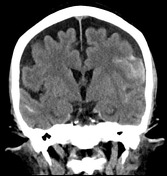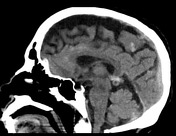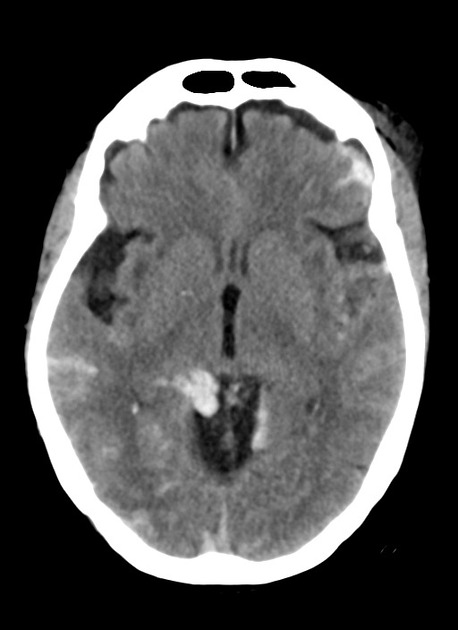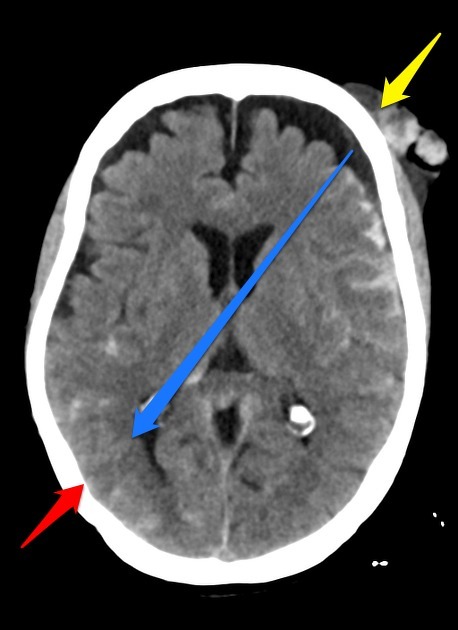Presentation
Fall from standing height
Patient Data







Subarachnoid hemorrhage in a left frontoparietal and right temporo-parieto-occipital distribution. Small volume of hemorrhage in the basal cisterns. Left tentorium cerebelli subdural hematoma measuring up to 3 mm. Ventricles, sulcal pattern and basal cisterns are age-appropriate. No skull fracture. Large left frontal subgaleal hematoma.
Conclusion:
Subarachnoid hemorrhage in a traumatic coup-contrecoup injury pattern.
Thin left tentorium cerebelli subdural hematoma.

Blue arrow = direction of the force
Yellow arrow = subarachnoid hemorrhage and subgaleal hematoma (coup injury, i.e. site of impact)
Red arrow = subarachnoid hemorrhage (contrecoup injury)
Case Discussion
Subsequent investigations did not reveal an aneurysmal cause. Coup-contrecoup injury patterns are common after a direct blow to the cranium.




 Unable to process the form. Check for errors and try again.
Unable to process the form. Check for errors and try again.